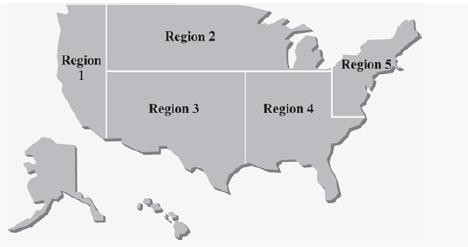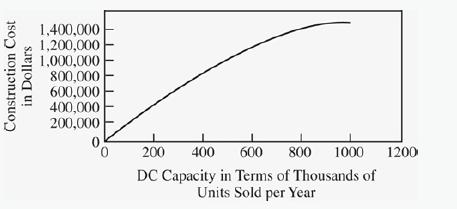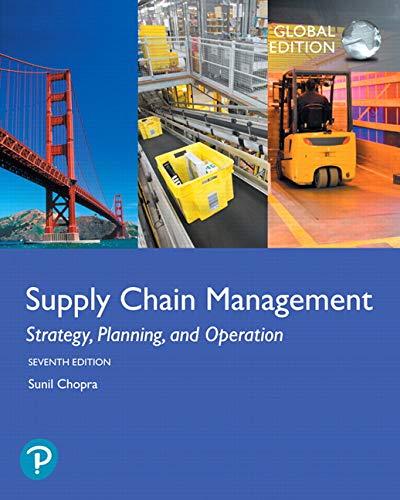ALKO began in 1943 in a garage workshop set up by John Williams at his Cleveland home.
Question:
ALKO began in 1943 in a garage workshop set up by John Williams at his Cleveland home. John had always enjoyed tinkering, and in February 1948 he obtained a patent for one of his designs for lighting fixtures. He decided to produce it in his workshop and tried marketing it in the Cleveland area. The product sold well, and by 1957 ALKO had grown to a $3 million company. Its lighting fixtures were well known for their outstanding quality. By then, it sold five products.
In 1963, John took the company public. Since then, ALKO had been very successful, and the company had started distributing its products nationwide. As competition intensified in the 21 century, ALKO introduced many new lighting fixture designs. The company’s profitability, however, began to worsen despite the fact that ALKO had taken great care to ensure that product quality did not suffer. The problem was that margins had begun to shrink as competition in the market intensified. By 2015, the board decided that a complete reorganization was needed, starting at the top. Gary Fisher was hired to reorganize and restructure the company.
When Gary arrived in 2017, he found a company teetering on the edge. He spent his first few months trying to understand the company business and the way it was structured. Gary realized that the key was in the operating performance. Although the company had always been outstanding at developing and producing new products, it had historically ignored its distribution system. The belief within the company was that once one makes a good product, the rest takes care of itself. Gary set up a task force to review the company’s current distribution system and come up with recommendations.
Current Distribution System
The task force noted that ALKO had 100 products in its 2017 line. All production occurred at three facilities located in the Cleveland area. For sales purposes, the contiguous United States was divided into five regions, as shown in Figure 12-8. A DC owned by ALKO operated in each of these regions. Customers placed orders with the DCs, which tried to supply them from product in inventory. As the inventory for any product diminished, the DC, in turn, ordered from the plants. The plants scheduled production based on DC orders. Orders were transported from plants to the DCs in TL quantities because order sizes tended to be large. On the other hand, shipments from the DC to the customer were LTL. ALKO used a third-party trucking company for both transportation legs. In 2017, TL costs from the plants to DCs averaged $0.09 per unit. LTL shipping costs from a DC to a customer averaged $0.10 per unit. On average, five days were necessary between the time a DC placed an order with a plant and the time the order was delivered from the plant.

The policy in 2017 was to stock each item in every DC. A detailed study of the product line had shown that there were three basic categories of products in terms of the volume of sales. They were categorized as types High, Medium, and Low. Demand data for a representative product in each category is shown in Table 12-8.
![]() Products 1, 3, and 7 are representative of High, Medium, and Low demand products, respectively. Of the 100 products that ALKO sold, 10 were of type High (with the same demand distribution as Product 1), 20 of type Medium (with the same demand distribution as Product 3), and 70 of type Low (with the same demand distribution as Product 7). The task force identified that plant capacities allowed any reasonable order to be produced and delivered in five days. The replenishment lead time was thus five days. The DCs ordered using a periodic review policy with a reorder interval of six days. The holding cost incurred was $0.15 per unit per day whether the unit was in transit or in storage. All DCs carried safety inventories to ensure a CSL of 95 percent.
Products 1, 3, and 7 are representative of High, Medium, and Low demand products, respectively. Of the 100 products that ALKO sold, 10 were of type High (with the same demand distribution as Product 1), 20 of type Medium (with the same demand distribution as Product 3), and 70 of type Low (with the same demand distribution as Product 7). The task force identified that plant capacities allowed any reasonable order to be produced and delivered in five days. The replenishment lead time was thus five days. The DCs ordered using a periodic review policy with a reorder interval of six days. The holding cost incurred was $0.15 per unit per day whether the unit was in transit or in storage. All DCs carried safety inventories to ensure a CSL of 95 percent.
Alternative Distribution Systems
The task force recommended that ALKO build a national distribution center (NDC) outside Chicago. The task force recommended that ALKO close its five DCs and move all inventory to the NDC. Warehouse capacity was measured in terms of the total number of units handled per year (i.e., the warehouse capacity was given in terms of the annual demand supplied from the warehouse). The cost of constructing a warehouse is shown in Figure 12-9. However, ALKO expected to recover $50,000 for each warehouse that it closed. The CSL out of the NDC would continue to be 95 percent.
Given that Chicago is close to Cleveland, the inbound transportation cost from the plants to the NDC would fall to $0.05 per unit. The total replenishment lead time for orders from the Chicago NDC would still be five days. The centralized DC would continue to follow a periodic review policy with a reorder interval of six days. Given the increased average distance, however, the outbound transportation cost to customers from the NDC would increase to $0.24 per unit.
Other possibilities the task force considered include building a national distribution center while keeping the regional DCs open. In this case, some products would be stocked at the regional DCs, whereas others would be stocked at the NDC.
Gary Fisher’s Decision
Gary Fisher pondered the task force report. It had not detailed any of the numbers supporting the decision. He decided to evaluate the numbers before making his decision.
Questions
1. What is the annual inventory and distribution cost of the current distribution system?
2. What are the savings that would result from following the task force recommendation and setting up an NDC? Evaluate the savings as the correlation coefficient of demand in any pair of regions varies from 0 to 0.5 to 1.0. Do you recommend setting up an NDC?
3. Suggest other options that Gary Fisher should consider. Evaluate each option and recommend a distribution system for ALKO that would be most profitable. How dependent is your recommendation on the correlation coefficient of demand across different regions?

Step by Step Answer:

Supply Chain Management Strategy Planning And Operation
ISBN: 9781292257891
7th Global Edition
Authors: Sunil Chopra





